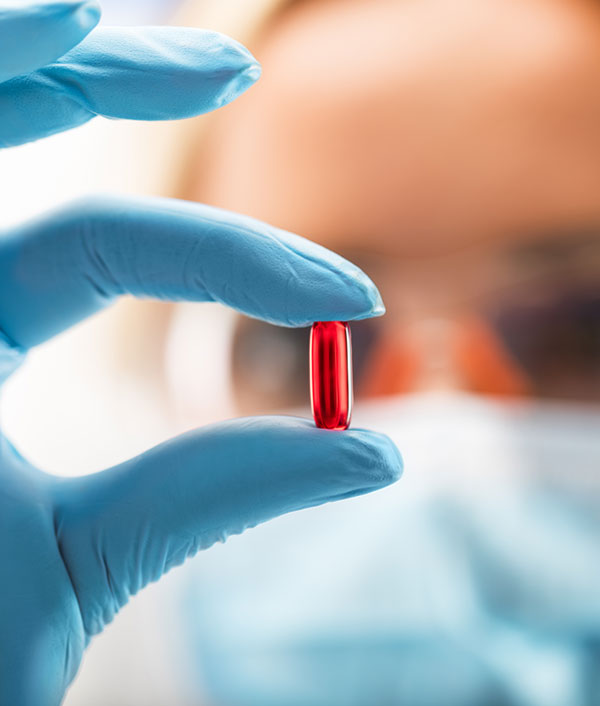SOLU-UP5TM – THE METHOD OF STABILIZATION FOR AMORPHOUS ACTIVE SUBSTANCES
The barrier to the development of amorphous drugs is their low physicochemical stability
The bioavailability of the pharmacologically active substance – which determines the effectiveness of therapy – is directly related to its dissolution rate. Many active substances in the crystalline form show low solubility and have low bioavailability.
Substances in an amorphous state usually have a faster dissolution rate than their crystalline forms. Low physicochemical stability stands in the way of amorphous drug development.
Amorphis Pharma Development science team has developed a method of stabilizing active amorphous substances SOLU-UP5TM
The physicochemical properties of amorphous particles are influenced not only by their structure, but also by molecular dynamics, which is why its study and detailed analysis enables us to achieve our goals.
Our stabilization method allows us to create drugs that:
- They show a higher degree of solubility and absorption in the digestive tract
- As a result of faster absorption, they can start working faster
- They achieve an equivalent therapeutic effect at lower doses
- They may show fewer side effects in the digestive tract compared to their crystalline counterparts
The SOLU-UP5TM method can be used:
- for compounds of class II and IV BCS
- with technologies including Hot Melt Extrusion (HME), Spray Drying (SD) and others
Amorphis Pharma Development science team has developed a method of stabilizing active amorphous substances SOLU-UP5TM
The physicochemical properties of amorphous particles are influenced not only by their structure, but also by molecular dynamics, which is why its study and detailed analysis enables us to achieve our goals.
Our stabilization method allows us to create drugs that:
- They show a higher degree of solubility and absorption in the digestive tract
- As a result of faster absorption, they can start working faster
- They achieve an equivalent therapeutic effect at lower doses
- They may show fewer side effects in the digestive tract compared to their crystalline counterparts
The SOLU-UP5TM method can be used:
- for compounds of class II and IV BCS
- with technologies including Hot Melt Extrusion (HME), Spray Drying (SD) and others
Our Scientists
Professor Marian Paluch
Professor of Physics at the Institute of Physics, Department of Science and Technology of the University of Silesia in Katowice
PhD. Eng. Justyna Knapik-Kowalczuk
Assistant Professor at the Institute of Physics Department of Science and Technology of the University of Silesia in Katowice



